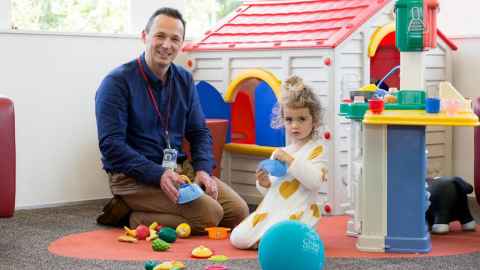Improving outcomes for children with cancer
7 December 2020
Contributing to the “10,000-piece puzzle” of improving cancer outcomes in New Zealand is the Precision Paediatric Cancer Project, led by paediatric haematologist-oncologist Dr Andy Wood.

Cure Kids, the Child Cancer Foundation and the Lindsay Foundation have recently increased their funding to $2.75 million for the five-year trial which began in 2018. Up to 25 children will be enrolled in the trial each year.
Andy, based at the Faculty of Medical and Health Sciences, says that the project uses revolutionary diagnostic testing, called next generation sequencing, to pinpoint which DNA mutations cause cancer in children.
By identifying exactly where the mutations occur, highly targeted treatment can be offered to children who have difficult-to-treat cancers.
The trial includes sequencing an individual’s gene panel of around 500 genes and selected cases will have the entire genome sequenced, where 23,000 genes and all six billion DNA letters will be examined.
Andy says this advancement in technology is another step towards solving the “10,000-piece puzzle” to improve cancer outcomes.
“For thousands of years people in healthcare have tried to individualise care and what the genetic revolution has done is give us another tool to do that.”
He says philanthropy is crucial for research into child cancers because they are different from adult cancers and need their own treatments.
“Fortunately child cancer is rare but that has made it harder to get research funding and interest from pharmaceutical companies. It’s so expensive to develop a new treatment that will improve cancer outcomes and pharmaceutical companies feel that there is less return on investment treating a childhood cancer, because they aren’t going to make as much money.
“Philanthropic funding has been critical to fill that void and drive outcomes to where they are today.”
He adds that the generosity of donors has a “snowball effect”.
“A lot of the research we’ve done builds on the others who have come before us, and is built on the work of donors who have come before recent donors. This starts to create an ecosystem that is far more capable and far more productive.
“Donors can be confident that their donations are not only beneficial to the project in front of them, but it amplifies and ricochets around the ecosystem to help other projects.”